A part of our research is dedicated to porous media related physics. On the one hand, we design experiments to study single and multiphase flow in permeable porous media. On the other hand, our experimental work focuses on fracture dynamics in ultra-low permeability porous media such as hydrogels and PMMA. All these research efforts are combined to address a wide range of applications from bioengineering to geophysics.
Here are some current projects in our group:
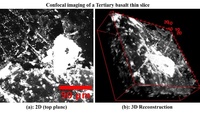
|
CO2 Mineralization in Basalts: In-situ mineralization of CO2 in basaltic geologic formations is a promising technology to remove anthropogenic CO2 emissions on a large scale. However, the physics and chemistry of basalt/water/CO2 system under high-pressure high temperature (HPHT) geologic conditions are far from well-understood. In this project we investigate how water-saturated basaltic rock interacts and reacts with supercritical CO2 under controlled HPHT conditions. Advanced techniques, such as NMR, confocal imaging, SEM-EDS, and µ-CT, will be utilized to quantify the change in basalt structures, surfaces, and mineralogy due to reactions. As supercritical CO2 percolates into the rock, it contacts, displaces, and acidifies resident water, which then dissolves silicate minerals, releasing divalent cations, such as Ca2+, Mg2+, Fe2+, to precipitate the carbonate ions in water. This dissolution/precipitation process couples with fluid transport and surface processes confined in the micro/nanopores of the rock, leading to evolving pore geometry/topology and precipitate distribution/morphology/mineralogy. In addition, production of noncarbonate secondary minerals competes for reactive surfaces and slows the carbonation rates. Our research may help establish how these micro- and nano-scale processes map to overall carbonation rates under HPHT conditions, which is critical for successful future projects of CO2 storage in basalts. Jianping Xu, Yiqiao Song, Negar Nazari, Wenyun Wang |
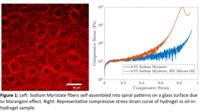
|
Compression Induced Syneresis of Fibrous Oil-In-Hydrogel Emulsions: Fibrous hydrogels are highly porous and have a large capacity to deform when strained due to the poor retention of water within the gel. When compressed, gels such as sodium myristate (SM) and fibrin can lose up to 95% of their mass due to syneresis. SM gels that are supplemented with a silicone oil (SO) emulsion display a maximum in the stress-strain curve (Πm) that occurs at ϵ=1-ϕ0, where ϕ0 is the initial volume fraction of oil. At this strain, almost all the water has been squeezed out of the gel, and the oil droplets coalesce to form a quasi-continuous phase that can then synerese from the gel after further compression. This may have important consequences for the material toughness. The height of the maxima depends on ϕ0, the radius of the oil droplets rd, and the pore size of the SM network rp |
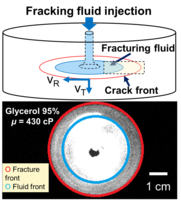
|
Fluid expansion-driven hydraulic fracture: Fluid-driven fractures occur ubiquitously in subsurface rocks in natural and engineering processes, such as earthquakes and hydraulic fracturing. Hydraulic fracturing involves injecting a high-pressure mixture of water, sand, and chemicals into a wellbore, fracturing the rock, and increasing the flow capacity within the rock. We visualize the hydraulic fracturing process using a high-speed camera at a temporal resolution of micron-seconds. In the experiments, fracking fluid is injected by a high-pressure syringe pump into a small, vertical hole at the center of a 3D-printed, transparent PMMA cylinder sample. A penny-shaped fracture is induced from the notch at the bottom of the small hole and moves toward the cylinder edge. A continuous video is recorded by a high-speed camera from the bottom of the cylinder. The fracture propagates in a stick-break pattern. In a break event, nucleation initiates at one or more locations near the crack tip and propagates in the tangential direction until covers the entire circle. The fluid front lags the crack front and the lag length increases with fracturing fluid viscosity when Newtonian fluid is used. However, when a high molecular weight polymer is used, the lag length is small regardless of fluid viscosity. For different polymers, the lag length increases as the polymer molecular weight decreases. Yujing Du |

|
Enhancing Oil Recovery by Controlling Velocity Distribution in Heterogeneous Porous Media: Heterogeneity within porous media structures is a common feature across various natural applications. In the field of petroleum engineering, for instance, oil fields often consist of rocks with diverse permeabilities, randomly interconnected with rocks of varying sizes and shapes. The challenge arises when water, used to displace oil, consistently follows paths of least resistance through high-permeability areas, limiting oil recovery. To gain control over water flow within these porous structures, we devised a two-layer transparent 3D glass capillary device. This innovative system employs glass beads to accurately mimic the natural heterogeneity of porous media, allowing us to visualize the process through confocal microscopy. Additionally, we introduced a polymer gel to selectively block high-permeability regions, autonomously adjusting the overall permeability. This adjustment in flow dynamics enables us to control flow velocity, facilitating uniform water distribution throughout the device. Consequently, we are empowered to study and understand the intricate flow behaviors and mechanics within heterogeneous porous media structures. Tianlei He |
|
|
Microfluidic Experiments for Hydrogen Storage in Porous Media: Hydrogen is considered as a clean energy carrier for the future, characterised by its lack of carbon emissions. To foster the development of the hydrogen economy and address the intermittent nature of renewable energy resources, substantial storage capacity for hydrogen is crucial. Porous subsurface geological formations, such as depleted gas reservoirs and aquifers, offer significant storage potential for hydrogen. However, our current understanding of how hydrogen flows within these porous media and how it interacts with rocks and fluids, especially during cycles of injection and withdrawal, remains limited. Microfluidic experiments play a fundamental role in elucidating the underlying mechanisms governing hydrogen flow at the pore scale and the hysteresis observed in trapping and reconnection during cyclic injections. Our research involves a series of drainage-imbibition experiments, which allow us to visualize and analyse the multiphase flow of hydrogen and water within the porous medium, including variations in residual phases throughout these cycles. P. Mostaghimi, N. Nazari, D.A. Weitz |
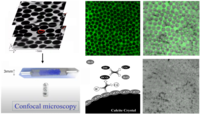
|
Carbonate Dissolution and Reactive Transport in 3D Rock Models: Considering the environmental footprints of greenhouse gases, a non-toxic approach to the mitigation of greenhouse gas emissions involves the injection and partial storage of CO2 in geological formations. Implementing efficient strategies for capturing, utilizing, and sequestering CO2 translates to reduced environmental impact and heightened thermodynamic efficiency. Achieving CO2 storage entails breaking it into smaller ganglia to facilitate dissolution and subsequent precipitation, however, this process presents significant challenges. The imperative is to ensure both safe and long-term storage while sustaining energy production to meet the increasing energy demand. Preventing leakage requires a thorough understanding of the interaction between CO2 and host rocks. Thus, a fundamental knowledge of the pore-scale physics and hydrodynamics governing trapping, reactions, and geochemistry is essential for the secure subsurface storage of CO2. To achieve this goal, I am creating transparent 3D rock models utilizing diverse glass beads. The surface of the glass is functionalized using silane agents, enhancing the precipitation of calcite on the available surfaces. This approach enables the generation of both continuous and discrete calcite precipitates within a 3D volume. The step-by-step progression of this process is precisely captured using confocal imaging. Subsequently, to simulate the conditions of porous media in the context of underground CO2 injection, an acidic solution will be injected to gradually dissolve the calcite. This methodology will facilitate the exploration of reactive transport and the various dissolution regimes present in carbonates. N. Nazari, Jianping Xu |
Here are some previous projects from our group:
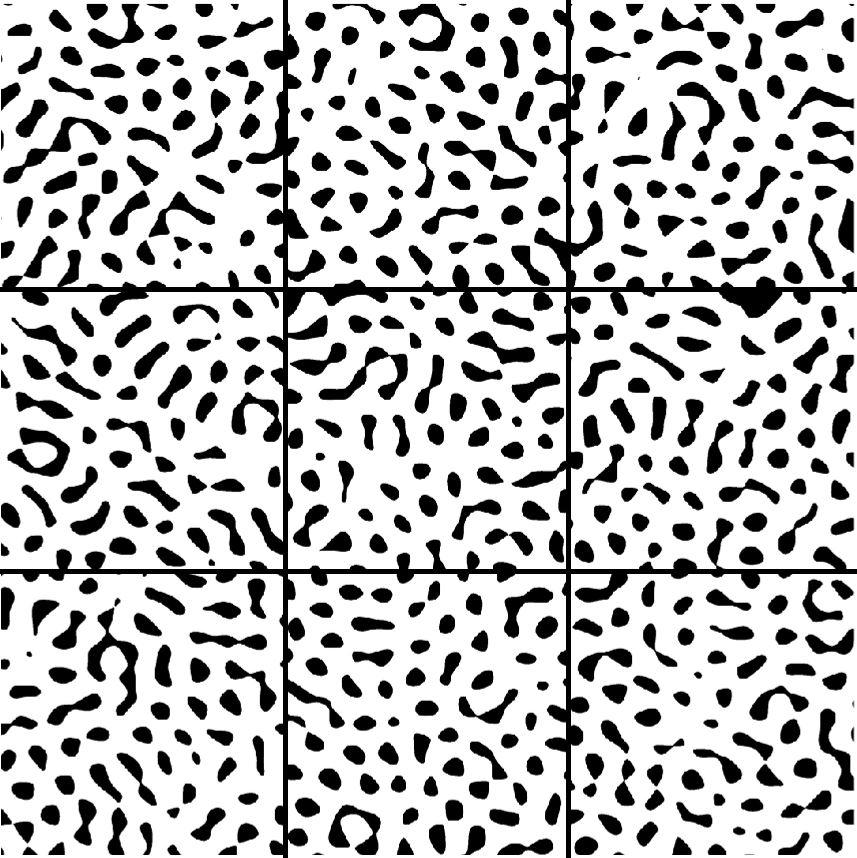
|
Experiment, Simulation and Machine Learning Approach of Steady Fluid Flow in Porous Media: Fluid flow in porous media has a wide range of applications from geophysics to bio engineering. Each porous media has its own singularity defined by its porous geometry; thus, it is responsible for the flow dynamics within. The porous media’s geometry plays a complex role in the fluid dynamics. To better understand how the porous media structure, change the flows, we randomly generate 2D porous medium. From that we can study some geometrical components such as: pore length, tortuosity, porosity, etc. and using machine learning, compare how those parameters play a role in the fluid dynamics experimentally and numerically characterized. This study, based on 2D porous media, is then used to extend the machine learning to understand flows in 3D models and more complex system by introducing particle flows and different porous media surface properties. T. Cochard, T. He, A. Djellouli, L. Xiao, D.A. Weitz |
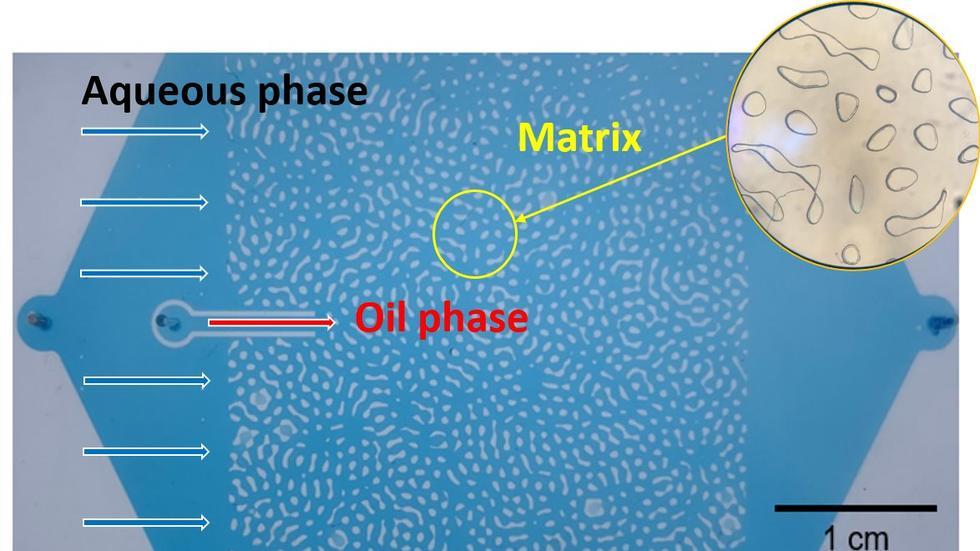 |
Experimental Investigations of Oil Transport in Porous Media: The understanding of immiscible multiphase flow in porous media is a major interest for oil and gas recovery in conventional reservoir. After the secondary oil recovery (water flood), the oil network becomes disconnected in the porous structure into ganglia. To understand how a single oil ganglion is being transported in such condition, we design an artificial porous media where we can tune the main parameters such as pore size, porosity, and connectivity, that we transfer into a microfluidic chip. Thanks to our design, we can push this oil ganglion with surfactant or polymer-based solutions and track it using high speed imaging technologies. We observed that the oil transport is achieved through several mechanisms: continuous transport, break up into droplets but also, under certain condition, coalescence of oil droplets. These dynamics leads to new understanding and perspectives for modelling the oil transport in porous medium. T. Cochard, J. Wu, L. Xiao, D.A. Weitz |
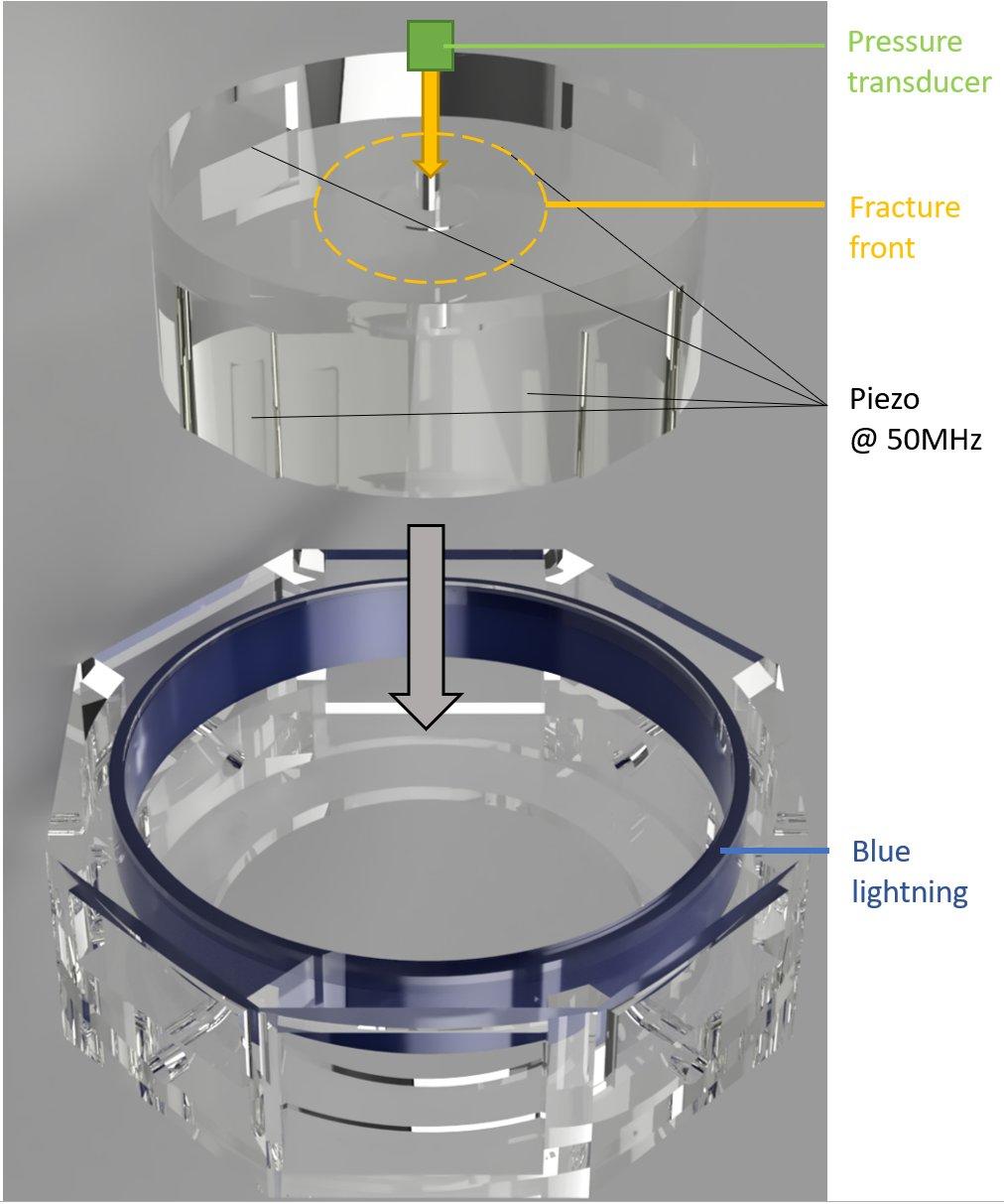
|
Hydraulic fracture dynamics: Hydraulic fracking of shale reservoirs is a process in which a highly pressurized fluid is injected into a rock formation, inducing fractures that create a connected path between the pores filled with hydrocarbons. Understanding the dynamics of these fractures is challenging as they grow very quickly in opaque, high-strength materials and because they are difficult to predict. In the lab, the high-strength (3 GPa) material is made transparent by using stereolithography 3D printing. The high-speed visualization is made possible by combining high speed imaging (75 kHz) and piezoelectric transducers (>50 MHz). As a result, we made the first experimental observation of multiple dynamics during the fracture propagation due to different levels of energy dissipation. T. Cochard, Y. Song, L. Xiao, D.A. Weitz |
|
|
Hydraulic Fracture of Brittle Gels: Hydraulic fracture of oil and natural gas bearing rocks has rapidly grown over the last two decades into an integral tool for the extraction of these resources. It has proven to be both very economically favorable as while also being cited as responsible for significant ecological damage. In order to address both its efficacy and safety, one must understand more about the factors that control the growth of these hydraulic fractures that cannot be observed in nature. Our goal is to study the behavior and control mechanisms of fractures produced in tough hydrogels where we can observe with far greater spatial and temporal accuracy than similar experiments performed on rocks. By measuring the basic physics that governs hydraulic fracture propagation we hope to make oil and natural gas exploration both safer and more efficient. Will Steinhardt |
|
|
Flow of multiple immiscible fluids in porous media: I study the dynamics of flow of multiple immiscible fluids in a 3D model porous medium. Using confocal microscopy we are able to visualize multiphase flow within the porous media. I am interested in understanding the underlying physical phenomenon that results in enhanced imbibition of the non-wetting phase due to flow of Non-Newtonian wetting phase, a shear thinning polymer solution. Shima Parsa |
| Understanding water-oil-solid interaction by visualizing two phase flow in porous media: Water-oil-solid interactions are abundant all around us, if it’s oil extraction from rock reservoirs, remediation of solvents from the soil or just percolating coffee. In essence the coffee analogy can serve well to exemplify different interactions; making coffee with a percolator is similar to extracting oil by replacing it with water under gravitational pressure. Making an espresso is similar to the process known as fracking where water with high pressure fracture the rock formation to reach untapped oil, in both cases the oil is trapped in pores at the porous medium. We can visualize the water-oil-solid interaction by matching the refractive index of all three while suspending fluorescent beads in the oil and the water. This procedure elucidates the underlying physics using high spatial-temporal imaging of the flow in both phases. Yaniv Edery | |
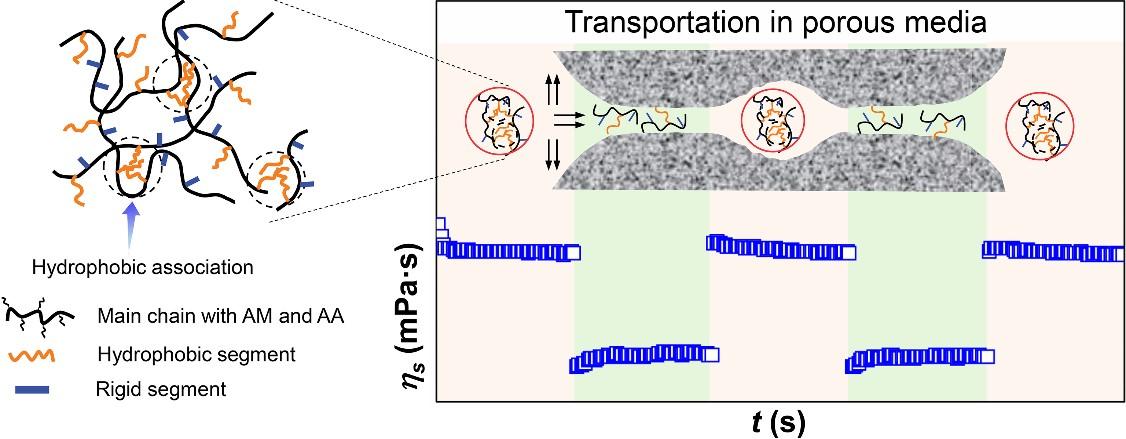
|
Flow behaviors of self-adaptive EOR polymers in porous media: Polymer flooding, an essential technique for enhanced oil recovery (EOR), has achieved large-scale success in most oilfields. However, the poor injectivity and ease of mechanical degradation of the commonly used commercial polymers impede their use in low-permeability reservoirs. To alleviate these issues, I am working on a self-adaptive polymer, which is responsive to the shear and elongational forces of pore throats by the association-disassociation transition of molecular chains. We will visualize and quantify this association-disassociation process with the aid of microfluidic techniques. Micromodels are an artificial porous apparatus that mimics microstructures of reservoir rocks, which offer a direct visualization of a complex flow environment at the pore scale. Hence, we will combine the micromodel (e.g. 2D PDMS model, 3D glass beads model) and confocal microscopy to study the change of polymer structure when flowing through the pore and throat. Yan Zhang |
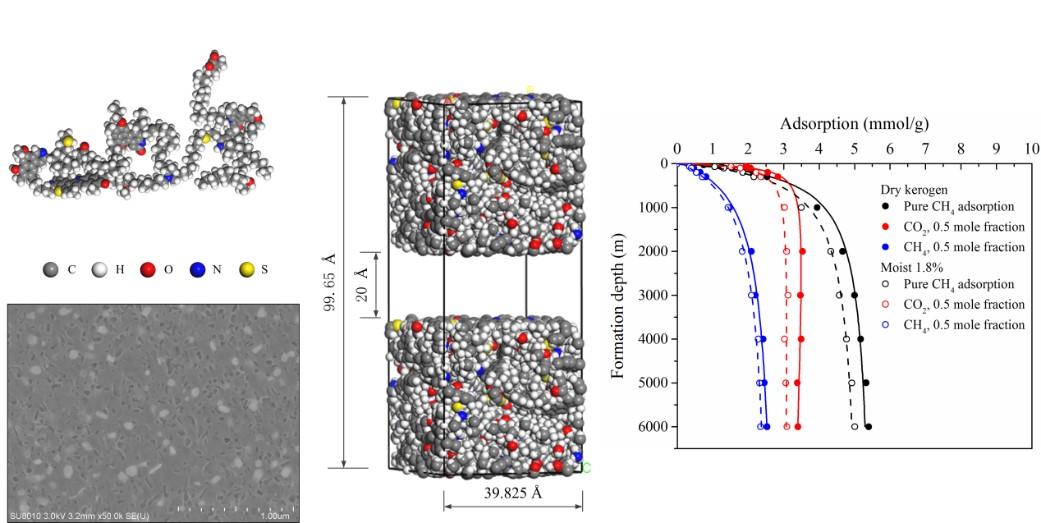
|
Molecular Simulation of CO2/CH4 Competitive Adsorption on Shale Kerogen: Shale gas, due to the advantages of large reserves and high energy efficiency, is a promising alternative energy resource for global energy crisis. Profitable production in shale gas reservoirs through advanced horizontal drilling and hydraulic fracturing technologies improves the necessity for a deeper understanding of shale gas adsorption behavior. Injecting CO2 into geological structures for storage has been recognized as a remarkable technique for reducing carbon emissions and mitigating global warming. Therefore, enhancing shale gas recovery by injecting CO2 brings the benefit for the combination of shale gas reservoir exploitation and CO2 geological storage. The percentage of adsorbed shale gas to the total gas-in-place varies from 20% to 85%. We built a kerogen molecular model and used molecular simulation to investigate the adsorption behavior of CO2/CH4 in shale kerogen. We use the adsorption selectivity to assess the relative adsorption priority between CH4 and CO2 on shale. Tianyu Wang |

|
Nanoparticles for unconventional oil recovery: Most of the residual oil lies in low permeability regions in the deep zone of the oil reservoir that remain after secondary recovery. However, due to the heterogeneity of the oil reservoir, water filled channels are easily formed, which decrease the sweep efficiency, leaving the crude oil in the low permeability regions. Polyacrylamide particles are applied and can be injected into the oil reservoir, blocking the high permeability region and forcing the flow goes into the low permeability region. These particles are hydrophilic and can swell after being immersed in water for a short period of time, which limits their application in oil recovery. One of my research projects is to develop a new type of “smart” nanoparticles with delayed swelling behavior, which can be injected into the low permeable region and change the conformance of the medium. We have invented a new method to synthesize core-shell particle with a polyacrylamide core and a degradable shell. By controlling the degradation behavior of the shell, we can finely control the swelling of the shell in the brine. These particles can swell up to 270 times their original volume, which can block the pore throat of the medium. Core flooding experiments show that the particles successfully block the pore throat resulting in a change in the permeability. We are now seeking new methods to scale up these particles. Besides, we are investigating the mechanism of particles swelling, the particle transport behavior in the porous medium, and the oil recovery mechanism while using nanoparticle. Liyuan Zhang |
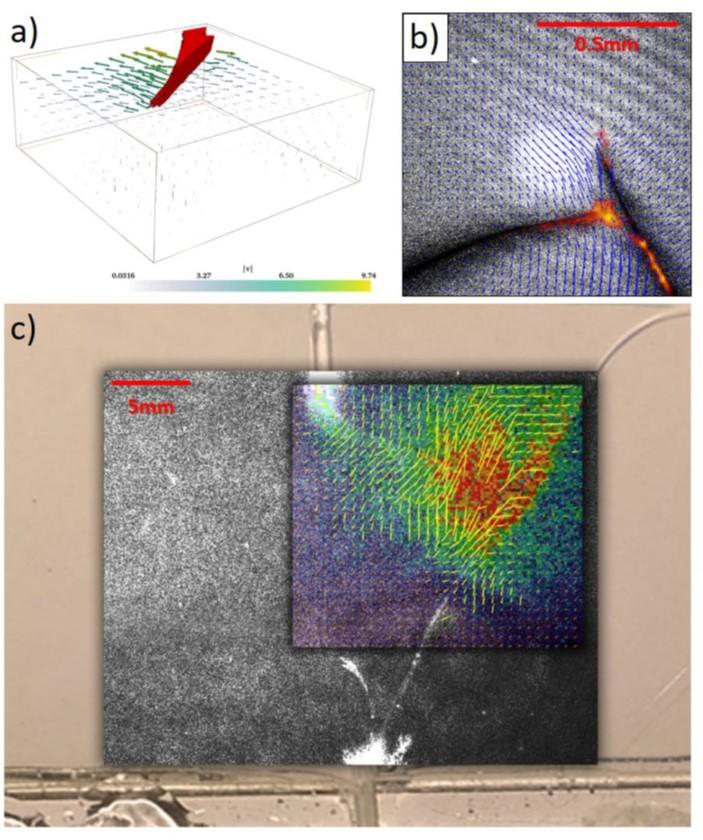
|
Fracture interactions in colloidal gels: We study the microscopic dynamics associated to the propagation of fractures in colloidal gels, ant their interactions with impurities, defects or other cracks. Fracture dynamics is theoretically understood in terms of the rate at which energy is released by dissipative processes inside the material, which involve fast, sub-micrometric motion spread over large distances and are extremely difficult to address in experiments. At the same time, their detection is crucial to understand how a crack propagates in complex environments, eventually splitting or being deflected by the presence of defects, impurities or other cracks. In the Weitzlab, we address such phenomena by combining confocal microscopy experiments with DSH, a novel optical technique allowing to reconstruct rapidly evolving microscopic deformation fields with ~100nm resolution and over macroscopic sample regions (~10cm2). We find that, as the crack gets deflected by defects and impurities, the complex deformation pattern surrounding the crack tip is distorted: this distortion unveils the microscopic origin of the interaction between a crack and its complex environment, building the foundations for a more profound understanding of fracture dynamics. S. Aime, M. Sabato, D.A. Weitz |

